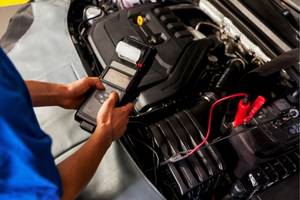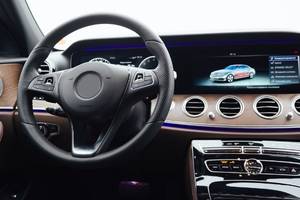Introduction
Are you diving into the world of Ford PCM programming software? Whether you're a seasoned mechanic or a dedicated DIY enthusiast, mastering this software can seem like a frightening task. Fear not! This guide will drive you through the necessary steps of using Ford PCM programming software, from familiarizing yourself with the basics to troubleshooting common issues. By following this effortless approach, you'll be ready to utilize the full potential of your Ford vehicle's Powertrain Control Module (PCM). So, buckle up and get ready to navigate through the road to programming proficiency!
1. Familiarize with Ford PCM Programming Software
Before you buckle up and hit the road to programming mastery, it's worth taking a break to familiarize yourself with the Ford PCM programming software.
First off, what is Ford PCM? Well, PCM stands for Powertrain Control Module. It's the primary computer in your Ford vehicle which is responsible for monitoring and controlling various components like the engine, transmission, and emission systems. When you're adjusting your Ford vehicle for performance or diagnosing issues, having a grip on the PCM is as essential as knowing how to change a tire.
So, where does the Ford PCM programming software come in? This software is the toolkit every mechanic or DIY car lover needs to reprogram the PCM. By using this software, you can adjust the PCM settings for improved performance, fuel economy, or even fix specific issues.
Here are some key features you should know about:
- Read and write PCM data: You can use the software to read the current PCM data and write new data back to it.
- DTCs (Diagnostic Trouble Codes): The software can display DTCs that can help diagnose any issues with your vehicle.
- Real-time data: You can monitor real-time data from the PCM, like engine RPM, coolant temperature, and more.
- Compatibility: The software works with a range of Ford vehicles, from trucks to sedans.
Now, it's time to prepare for the programming journey ahead. Let's get your Ford PCM programming show on the road! Are you ready to take the driver's seat?
2. Preparations before programming
Now that you're familiar with the Ford PCM programming software, it's time to make sure that you have everything ready before you start programming. Remember, even the most experienced mechanics make sure they have all their tools in their hand before they start working on a car.
The first step in preparing for the task at hand is making sure you have all the necessary equipment. Here's what you'll need:
- A laptop or desktop computer: Your computer will serve as the control center for the software. It doesn't have to be the latest model, but it should be capable of running the Ford PCM programming software smoothly.
- A reliable Internet connection: You'll need this to download the software and any updates it might need. Plus, it's always handy to have the web at your disposal should you need to look something up in the middle of the process.
- OBD-II Connector: This is the interface between your vehicle and your computer. Ensure it's compatible with your Ford vehicle.
Install the software
The next step is to get the Ford PCM programming software onto your computer. Visit the official website and follow their instructions to install it. Don't forget to check for any software updates before you start—this will ensure you're working with the latest version of the software.
Connect your vehicle
Once you've got the software installed, connect your vehicle to your computer. Plug the OBD-II connector into the vehicle's diagnostic port—usually located underneath the dashboard. Connect the other end to your computer.
Backup your PCM data
The final step is to back up your current PCM data. This is a critical step—it means if anything goes wrong during the programming, you can restore your PCM to its original state. Just think of it as having a spare tire in the trunk.
Now that you're all set up, it's time to dive right into the actual programming process. Ready to hit the road and start programming your Ford PCM? Let's do it!
3. Step-by-step guide to efficient programming
It's time to get down to the essentials of programming your Ford PCM. Below is a systematic guide that will help you through the Ford PCM programming software with ease.
Kickstart the software
First things first, fire up the Ford PCM programming software on your computer. This is your control tower, the place where all the magic happens. It's similar to starting your vehicle; you can't go anywhere without turning on the key.
Choose your vehicle
Next, you'll need to select the model of your Ford vehicle in the software. This is important because the software uses this information to provide you with the correct programming options. It's like choosing the right map before starting a journey.
Read the PCM
Now it's time for the software to read your vehicle's PCM. Click on the 'Read PCM' button and the software will start gathering all the necessary data. It's kind of like having a chat with your vehicle before you start adjusting its settings.
Make your changes
Once the software has read the PCM, you can start making your changes. Remember to take your time and double-check everything. After all, you wouldn't want to accidentally turn off your car's air conditioning in the middle of summer, would you?
Save and write the new program
After making your changes, click 'Save' to store the new program. Then, click 'Write' to install the new program into the PCM. Think of it as giving your car a new set of instructions to follow.
Validate the changes
Finally, confirm the changes by starting your vehicle and checking that everything is working as expected. If something doesn't seem right, don't panic. Simply restore your backup data and try again. There's no harm in taking a few practice runs, right?
And there you have it! You've successfully programmed your Ford PCM with the Ford PCM programming software. Now, that wasn't too hard, was it?
4. Tips and Techniques for Troubleshooting Common Issues
Now that we've mastered the art of programming with the Ford PCM programming software, let's switch gears and talk about troubleshooting. After all, it's always good to have some tools in your toolkit for those unexpected bumps on the road.
The software isn't opening
If you're having issues getting the software started, don't hit the panic button just yet. Try restarting your computer, as sometimes a good old-fashioned reboot can clear any temporary glitches. If that doesn't work, reinstalling the software might be the next step to consider.
The vehicle isn't found in the software
Can't find your Ford model in the software? But don't worry, it could just be a simple data update issue. Check if there's a new version of the Ford PCM programming software available that supports your model.
The software can't read the PCM
If the software is struggling to read your vehicle's PCM, there might be an issue with the vehicle's connection. Check to see if the OBDII cable is properly connected to both your vehicle and the computer. If that's all in order, the PCM itself might have a fault that needs a professional's touch.
The new program can't be written to the PCM
Having trouble writing the new program to the PCM? First, make sure the vehicle's battery isn't running low, as this can affect the writing process. If the battery is fully charged, then try restoring your backup data and starting the process again from start.
The vehicle isn't behaving as expected after programming
If your vehicle is acting up after programming, it's best to return to the original settings. Restore your backup data and check if the vehicle returns to normal. If it does, then the issue likely lies with the changes you made in the program.
Remember, you can always reach out to Ford support or a trusted mechanic if you're uncertain. After all, it's better to be safe than sorry when it comes to your vehicle's health.
And so, our journey with the Ford PCM programming software comes to an end. But remember, just like any road trip, the more you travel, the better you become at navigating. So, keep exploring, keep learning, and remember—every good mechanic was once a beginner.
Conclusion
Congratulations! You've now completed your journey through the Ford PCM programming software. With a solid understanding of the software, preparation tips, step-by-step programming guidance, and troubleshooting techniques, you're well on your way to becoming proficient in Ford PCM programming. Remember, mastering this software is a process of continuous learning and practice. Don’t be discouraged by initial challenges; every successful mechanic starts as a beginner. Keep exploring and refining your skills, and your Ford vehicle will thank you for the improved performance and reliability.
FAQs on
Step-by-step Guide on Ford PCM Programming Software in 2025 : Tips and Techniques
-
1. What is a Ford PCM, and why is it important?
Ans.
A Ford PCM (Powertrain Control Module) is the main computer in your vehicle that manages engine, transmission, and emission systems. It's essential because it controls how these systems operate, which affects the overall vehicle performance and efficiency.
-
2. How do I know if my Ford PCM programming software is up-to-date?
Ans.
You can check for updates by visiting the official website of the software provider or checking within the software application itself. Regularly updating makes sure you have the latest features and bug fixes.
-
3. What should I do if my Ford PCM programming software won't open?
Ans.
If the software isn't opening, try restarting your computer. If the issue continues, reinstall the software. Make sure your computer meets the software’s system requirements and check for any conflicting programs.
-
4. Why can’t I find my Ford model in the programming software?
Ans.
If your vehicle model isn’t listed, it might be due to an outdated version of the software. Check for software updates that might include support for newer or less common Ford models.
-
5. My vehicle’s PCM data isn’t being read. What could be the problem?
Ans.
If the PCM data isn’t being read, make sure that the OBD-II connector is properly connected. Additionally, check the vehicle’s battery charge and the condition of the PCM itself, as faults might require professional diagnosis.
-
6. What should I do if my vehicle isn’t functioning correctly after programming?
Ans.
If your vehicle isn’t performing as expected, restore the original PCM data from your backup. If issues continue, consult a professional mechanic or contact Ford support for further assistance.


